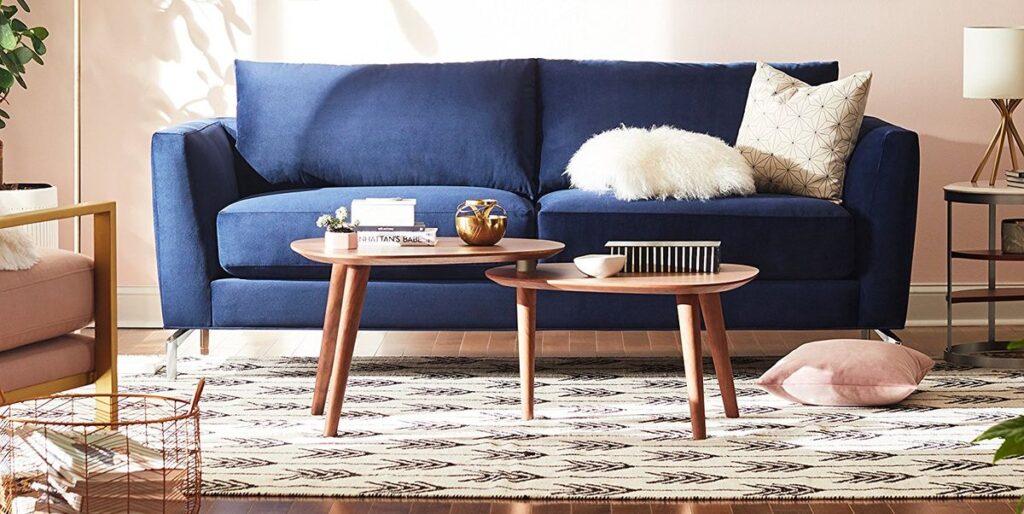A quick sweep with the vacuum is typically a good place to start when cleaning the majority of the surfaces in your home, including your screen door, your walls, and your furniture. The same is true of wicker furniture. Wicker can benefit from the use of a vacuum with a brush attachment to help quickly and easily clean crevices because it can accumulate dust, dirt, and debris between its weave. Keep your vacuum’s power on a lower setting if you have control over it to prevent harming the weave. Consider using a blow dryer or a burst of compressed air to clean up a dusty area if a vacuum doesn’t work. Use a duster to sweep your wicker furniture in between vacuuming sessions. Here’s how to safely clean wicker furniture if you need to do more than just remove dust.
Table of Contents
What Do You Need?
Dish soap
Water
A soft-bristled toothbrush or scrub brush
A microfiber cloth
How To Clean Wicker Furniture?
Both indoor and outdoor wicker furniture is a common choice. Although it needs proper upkeep, high-quality wicker furniture is comfortable to sit on, has a great appearance, and lasts for many years. You need to know how to clean wicker furniture to ensure that it lasts for many years. Wicker is not something you should just throw away and forget.
The required maintenance includes regular cleaning in addition to a deeper cleaning twice a year. Wicker has a beautiful and sturdy design, but what really makes it so popular is the enormous variety of patterns and colors. You can quickly find the ideal look for the room you are decorating thanks to all the options.
Given that wicker is a natural product, learning how to properly clean wicker baskets and furniture is essential. Some cleaning techniques work on all types of wicker furniture, while others only work on particular pieces due to the weave of plant fibers and reeds.
1. Dust wicker furniture
Wicker furniture can acquire dust just like any other type of furniture. In order to accomplish this, pick up a soft cloth or feather duster and begin sweeping it over all of the weaved spaces. Dusting is good for either synthetic or natural wicker pieces and there are several ways to accomplish it:
Try using a paintbrush with soft bristles to softly reach those hard-to-reach areas so you can avoid scratching the surface.
You can use an old toothbrush to clean up stains that may need a larger brush, such as those close to the furniture frame.
This can also be accomplished using a vacuum. To prevent the wicker from being harmed, use the brush attachment’s lowest setting.
According to Women’s Day, the dirt does embed itself into the weave; if you wait too long to take care of it, the grime is challenging to remove. For this reason, it is crucial to maintain a regular cleaning schedule. The wicker should be cleaned, repaired, and conditioned at least once a year, but if you don’t have much time left, don’t worry. Synthetic wicker is more tough than natural, so it is permissible to be a bit more determined when cleaning it
2. Wash wicker once a year
A wipe-down is a great addition to your spring (and possibly fall) cleaning. So after giving the wicker a thorough dusting, you should moisten the fabric and lightly move it over the surface. Ensure that you cover the underneath areas by moving from top to bottom. To remove any remaining lather, use a wet cloth after this. If your wicker furniture has stains or spots where the dirt won’t come off, as is common with outdoor furniture, add some mild dish soap (let’s say ¼ soap to 2 cups of warm water) and wipe down the furniture with a cloth before rinsing it with a garden hose.
You might give a handheld steam cleaner a try if sometimes even this is insufficient. To ensure that the wicker dries completely, do this on a sunny, windy day; otherwise, it might bend. As mentioned by Bob Vila, you can also use a fan or hair dryer. Before returning the wicker to its location, don’t forget to give it enough time to completely dry. More caution should be exercised when wetting down natural wicker furniture, according to Wicker Living. Try to only work on a distance of six inches at once. Allow it to dry completely before moving on to the next section because wetting large sections might encourage bending and cause the furniture or accessory to become deformed.
3. Remove mold and mildew
You should always keep any furniture free of mold and mildew; to do this, mix 25% white vinegar and 75% water in a simple DIY recipe. Apply this to the wicker and then clean it with a damp cloth. According to Bob Vila, a good cleaning solution for outdoor wicker furniture is ¼ cup of liquid dish soap to 2 cups water and 1 cup of white vinegar. If you opt to use a commercial cleaner for this task, avoid using anything that contains corrosive chemicals or abrasive scrubbers. If you are not gentle, the wicker on your furniture may unravel from the base and lose its finish or color.

4. Repair broken slats in wicker
Although the wicker slats that are intertwined look so lovely, they are somewhat brittle and may break if you apply enough pressure to them. Thankfully, routine repairs can stop them from breaking even more. These can be fixed with wood glue, which should solve the issue. The best way to repair this damage, though, is to stop it before it starts. Therefore, never use abrasive materials on your wickers, such as a hard brush or a steel wool pad. You won’t achieve anything by breaking the item; instead, you risk destroying any protective coating the manufacturer may have used, as in the case of lacquered items.
5. Keep wicker in proper environments
Recognizing the limitations of your wicker furniture, whether it be natural or synthetic, is one way to keep it in use for a long time. Wicker requires attention; it won’t survive in overly cold or overly hot environments because it will make the material more brittle and elastic, respectively. It despises prolonged periods of moisture, which is another reason why you should thoroughly dry it after cleaning or whenever something has been spilled on it. Days of persistently damp weather also promote the growth of mildew.
As you locate spaces for your wicker companions, keep this in mind. Keeping patio furniture covered by a porch roof or a patio awning can help it live to a ripe old age even though it is made of a material that is meant to be used outdoors. Rain and sun can loosen joints, weaken fibers, or remove paint from wicker, which can also cause its slats to unravel or crack.
6. Get a brand new life with a little paint
A brand-new coat of paint breathes new life into anything. You can take advantage of this as a chance for rebirth in addition to refreshing the color. Want some purple patio furniture? Do you want to enhance your décor with a little gold? Wait for a nice sunny day with soft winds and pull out the following supplies:
Drop cloth
Sponge
Liquid deglosser
Outdoor acrylic spray paint
Prepare yourself for some DIY now. Spray paint can catch hold of the wind and end up somewhere you didn’t intend it to, so place your drop cloth on the ground far from your house, car, and other prized possessions. Next, thoroughly clean the object because you want to paint in a clean, dust-free environment. Put on the deglosser to aid in the paint’s adhesion to the wicker. Make sure the object is dry before spraying, even if you have to put off your work until the following day.
How To Keep Wicker Furniture Cleaner Longer?
Natural wicker is porous and should not be left out in open spaces, unlike synthetic wicker furniture, which is made to withstand the elements. Natural wicker furniture should never be kept in damp areas like basements.
How To Get Rid Of Smells In Wicker Furniture?
Mold, mildew, or general moisture are the usual causes of a musty odor coming from your wicker furniture. Apply baking soda after cleaning the area as directed above for removing mold and mildew. If it’s too humid outside, dry your furniture in the open air or in an air-conditioned space before vacuuming the baking soda off.
How To Clean Synthetic Wicker Furniture?
Furniture made of synthetic resin wicker, also known as outdoor wicker or all-weather wicker, needs less maintenance. To protect it from flying debris and bird droppings, hose it down and cover it if it won’t be in use for a while. Store it if it gets cold in your area during the winter to prevent the resin from shrinking and expanding and weakening.
Additional Tips To Clean Wicker Furniture
- Be cautious not to press too firmly on the slats of wicker furniture to prevent damage.
- Make repairs to broken or damaged slats using wood glue, allowing sufficient time for the glue to dry before carrying on with the cleaning. Naturally, you might need to take the item to a specialist if the damage is severe.
- Wicker shouldn’t be cleaned with a hard brush, a steel wool pad, or any other harsh abrasives. The protective finish on a lacquered piece could be removed, severely damaging unfinished, natural wicker.
- Never soak wicker or allow it to accumulate water as this can cause spotting, deformity, or even both.
Wicker furniture and accessories can be kept comfortable and enjoyable for many years with just a little bit of routine maintenance and cleaning.



